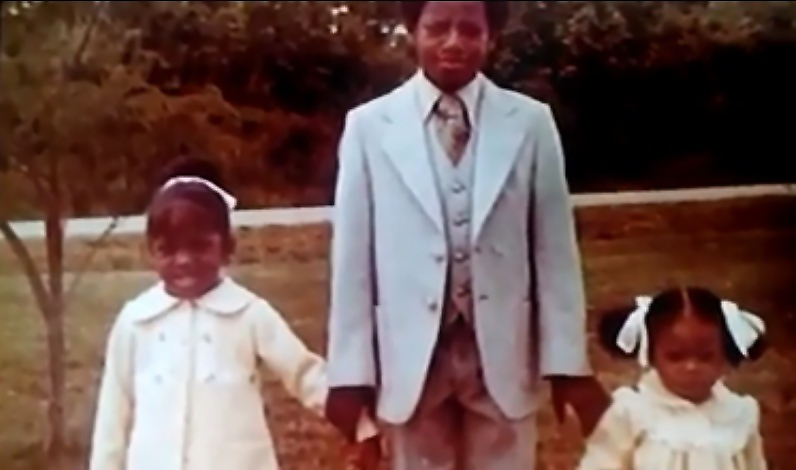8 Things You Need to Know About Pervis Payne
Pervis Payne, who has an intellectual disability, spent 33 years on Tennessee's death row.
07.22.20 By Daniele Selby
Updated on Aug. 31, 2023 at 1:17 p.m. ET: The Tennessee Criminal Court of Appeals has affirmed Shelby County Criminal Court Judge Paula Skahan’s January 2022 ruling that Pervis Payne will serve his two life sentences at the same time. The ruling makes Pervis eligible to go before a parole board in less than four years.
Updated on Nov. 23, 2021 at 11:38 a.m. ET: Today, the Shelby County Criminal Court formally set aside the death sentence of Pervis Payne days after the Shelby County district attorney conceded that Mr. Payne is a person with intellectual disability and therefore cannot be executed. The result of the D.A.’s concession is that Mr. Payne will need to be re-sentenced. A re-sentencing hearing will take place at a later date.
Pervis Payne has maintained his innocence for more than 30 years. Yet, despite having no prior criminal record and living with an intellectual disability, he was sentenced to death in Tennessee. Gov. Bill Lee granted Mr. Payne a temporary execution reprieve in November 2020, and a year later, Mr. Payne was officially removed from death row following the Shelby County district attorney’s concession that he is a person with an intellectual disability and therefore cannot be executed.
The Innocence Project joined Kelley Henry’s team at the Federal Public Defender’s Office in Nashville and the Milbank firm in filing a legal petition on July 22, 2020 for DNA testing of evidence in Mr. Payne’s case that had never been tested before and could help prove his innocence. And testing of some evidence was completed and submitted to the court in January 2021; however, key pieces of evidence mysteriously went missing before testing could be done.
Mr. Payne has always maintained his innocence and said that he was waiting for his girlfriend to return to her apartment in Millington, Tennessee, one afternoon in June 1987, when he discovered that her neighbor, Charisse Christopher, and her children had been brutally attacked. Mr. Payne, who lives with an intellectual disability, was shocked by the bloody scene.
Despite his panic, he tried to help, but as soon as he saw the police arriving, he had a sinking feeling that he would be mistaken for the attacker. His fear soon became reality. Mr. Payne was arrested later that day, and the following February was convicted of murder and sentenced to death . More than three decades later, he is still on death row.

Pervis Payne, age 7. Photo courtesy of the Payne family.
Here’s what you need to know about his case — including how the prosecution exploited Mr. Payne’s intellectual disability, hid evidence, and evoked racist stereotypes to convict him.
1. Pervis Payne has always maintained his innocence. For 33 years, Mr. Payne has consistently said he did not commit this crime and that he was an innocent bystander who happened upon the crime scene and tried to help.
2. Key evidence from the case that could identify the actual perpetrator of the crime — including the victim’s fingernail clippings — have gone missing. For decades, the evidence in this case went untested. Last year, the Shelby County Criminal Court ordered testing and on Jan. 19, 2021, Mr. Payne’s lawyer’s submitted the results of the testing to the court, which included male DNA from an unknown third party, but it was too degraded to identify an alternate suspect using the FBI’s database. However, the State is unable to account for the crucial pieces of evidence that have mysteriously gone missing. The victim’s fingernail clippings, which have now disappeared, were particularly crucial as the prosecution argued at trial that the victim had scratched her attacker.
3. Mr. Payne had no motive to commit such a crime. Mr. Payne, who lives with an intellectual disability, is described by those who know him as kind and respectful. He loved to make his sisters and mother laugh and helped his father out at his church in any way he could. In the absence of a clear motive, the prosecution argued that Payne had taken drugs, looked at a Playboy magazine, and was looking for sex when he approached the victim. They argued that he attacked her after she rejected him. But there is no evidence that Payne had used drugs that day and he did not have a history of drug use, nor a criminal record.

The Payne family: Carl, Bernice, Rolanda, Pervis, Tyrasha. (Image: Courtesy of the Payne family)
4. The prosecution employed racial stereotypes to portray Mr. Payne, a Black man, as a hypersexual and violent drug user, who attacked a white woman. Shelby County, where Mr. Payne’s trial took place, is among the 25 counties with the most recorded lynchings between 1877 and 1950 in the United States. The county’s history is deeply rooted in slavery and deals with its legacy to this day. Knowing this, the prosecution repeatedly highlighted the victim’s “white skin” when referring to parts of her body during the trial, while painting a portrait of Mr. Payne as a drug-using, aggressive, hypersexual Black man.
Similar stereotypes have historically been used to falsely accuse or wrongfully convict Black men, like Emmett Till and the “Scottsboro Boys” of raping white women.



Excuse me? No evidence?? How about the fact that he was so thoroughly drenched in the victim’s blood that he was said to have been “sweating blood” when he was confronted by police – which he attacked and then ran from incidentally. How about his DNA being on the handle of the murder weapon? Do you actually buy that a women stabbed *84 TIMES* needs a knife pulled from her neck by a well-meaning passerby who just so happens upon her in the seconds between the ‘real’ killer leaving and the police arriving? What about the beer cans inside her apartment with his fingerprints on them? What about the witness that heard a commotion and witnessed a black arm with gold wrist watch attempting to shut the back door from inside? Was it coincidental that the man running from the scene “sweating blood” – the victim’s blood – happened to be a black man who also happened to be wearing a now blood soaked gold wrist watch when he was apprehended hiding in the attack of a former girlfriend?
People that buy this ‘innocence’ project story either haven’t looked at ANY of the facts or are pathologically insane; in either case given the moral weight of what is at stake, not doing the most cursory research before campaigning for Payne is actually evil.